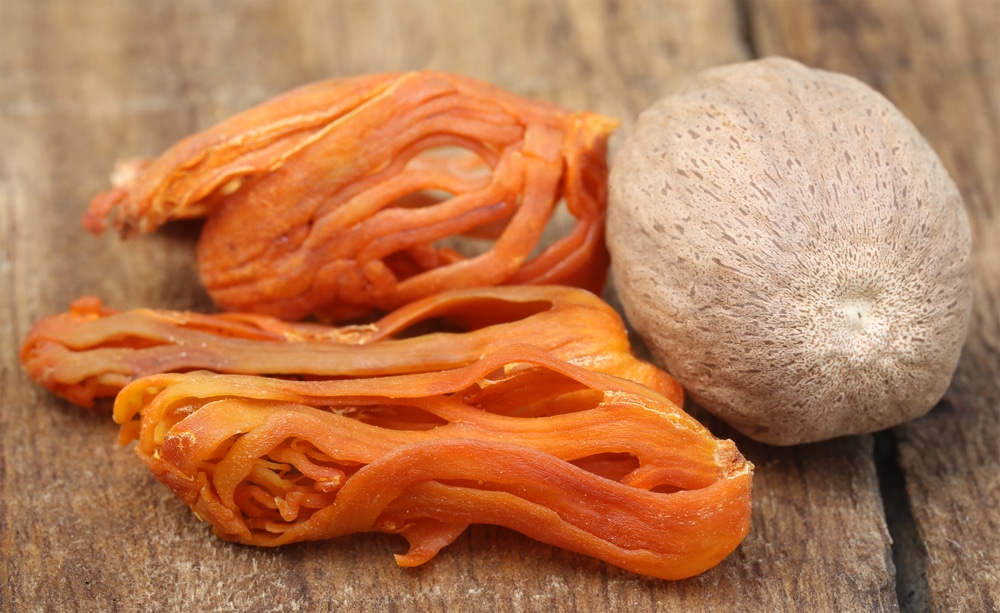Table of Contents
If you want a versatile spice that can elevate the taste of your favorite sweet and savory dishes, there is no other alternative to mace. Mace spice is derived from the outer covering of the nutmeg tree, but it still possesses a distinct flavor and aroma. It is often overlooked and mixed up with its sister spice, nutmeg; however, mace holds its distinct position in the culinary world. In this article, we will analyze mace spice origin, production, and harvesting, as well as its flavor profile, culinary uses, and nutritional and health benefits.
The Origin of Mace Spice
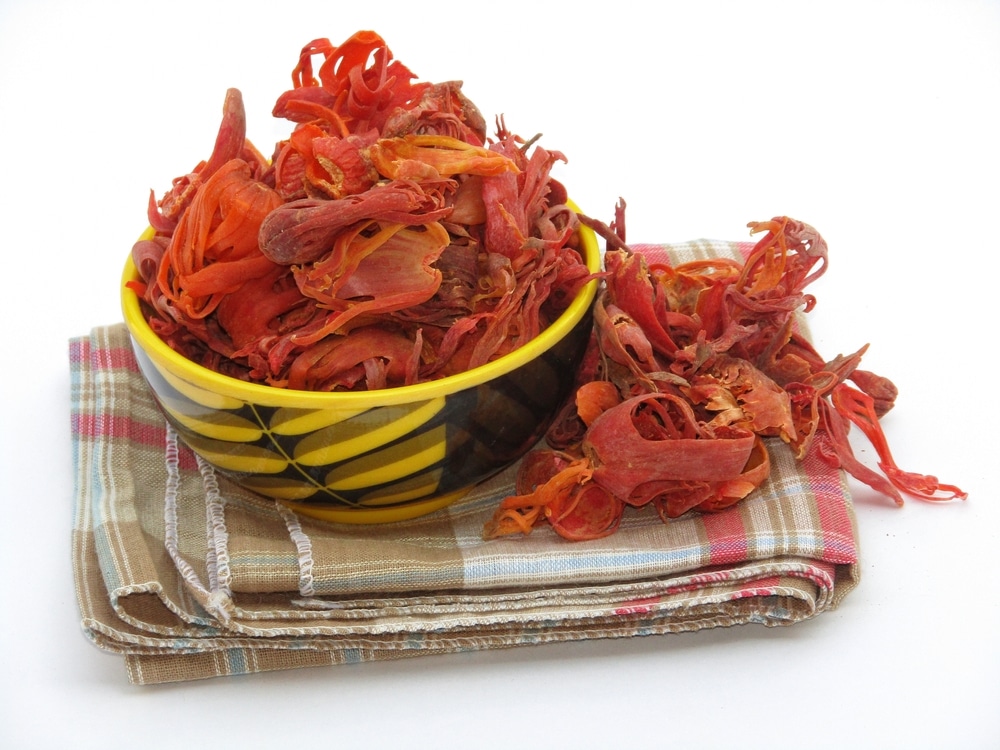
Mace is derived from the Myristica fragrans tree, a tropical evergreen native to Indonesia’s Spice Islands. It is the source of mace spice. The same tree produces nutmeg. The tree yields apricot-looking fruit that, when ripe, breaks open to expose a nutmeg seed encased in a crimson, lacy covering. After drying, this vivid red layer transforms into the mace’s blades. Mace is carefully harvested and dried, giving a product that is extremely tasty and visually appealing.
Mace Unique Flavor Profile
The flavor profile of mace is similar to but distinct from nutmeg. Although both spices have warm, spicy undertones, mace has a more delicate, flowery scent with hints of citrus and pepper. This makes it a great complement to various baked goods and savory dishes. Mace’s taste is often compared to a combination of nutmeg and cinnamon, with a hint of spiciness that complements both savory and sweet recipes.
Storage of Mace spice
Whole mace blades have a longer shelf life than ground mace. To maintain the flavor of mace, it is better to purchase it whole and grind it as needed. To preserve the strength and freshness of mace, store it in an airtight container in a cool, dark place.
Culinary Uses of Mace Spice
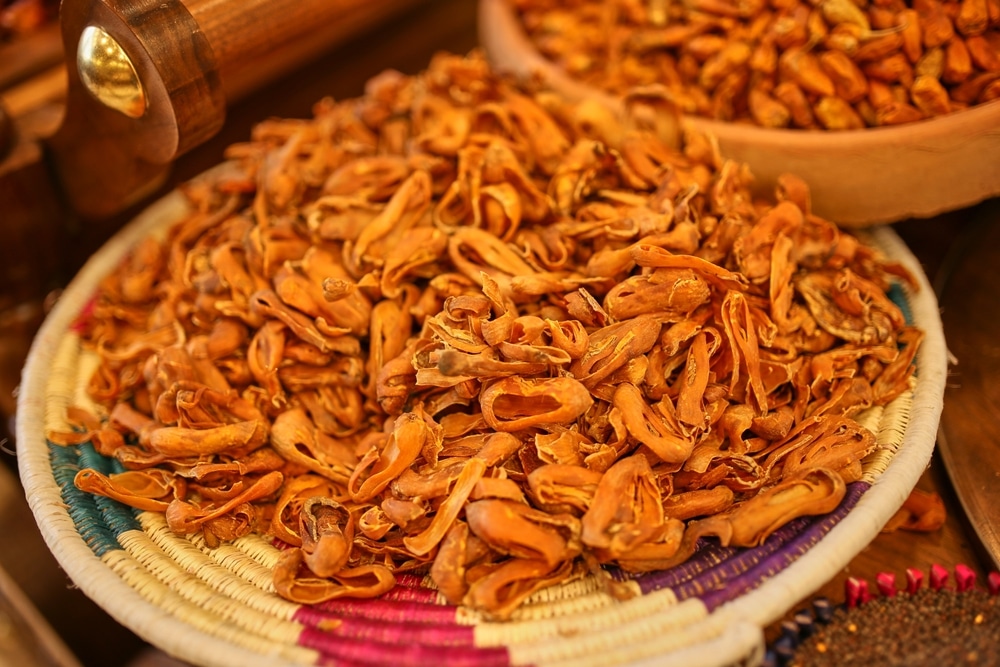
Mace spice is a versatile kitchen ingredient. It’s a common ingredient in soups, sauces, and sausages in French cooking. It is a favorite for holiday baking because of its warm, aromatic characteristics, which give cookies, cakes, and pies more depth. There is no need to use a lot of mace spice. Start with a small amount and adjust to taste. For the greatest flavor, use freshly ground mace or whole mace blades that you grind yourself.
Indian Cuisine
Mace, often referred to as “javitri,” is used in many different Indian recipes, such as rich gravies, biryanis, and desserts.
Middle Eastern Cuisine
It is often included in spice blends like Baharat and used in lamb and rice dishes.
European Cuisine
Historically, mace was used in European cooking, particularly in Medieval and Renaissance recipes for both sweet and savory dishes.
Caribbean Cuisine
Mace is used in Caribbean jerk seasoning, as well as in traditional sauces and stews.
Incorporating Mace into Savory Dishes
Ground mace adds a warm, aromatic flavor to savory dishes like soups, stews, and marinades. It enhances the taste of vegetables and legumes and pairs well with meats, especially pork and lamb. Mac and cheese and mashed potatoes can be made even more delicious with mace.
Mace in Baked Goods
Mace spice gives baked goods a distinctive twist. Its sweet and spicy flavor makes it an excellent substitute for nutmeg in recipes like gingerbread, pumpkin pie, and spice cakes. When baking, use mace sparingly to avoid overpowering the other flavors. A small amount can add a delightful warmth and richness to your desserts.
Spices for Mac and Cheese
Are you looking to spice up your mac and cheese? Mace spice is a beautiful complement. Its warm, slightly spicy flavor complements the creamy, cheesy goodness of mac and cheese, adding layers of complexity to this classic comfort food.
Mace in Beverages
Mace can also be used in beverages. Add a pinch to mulled wine, hot cider, or eggnog for a festive and aromatic touch. Its subtle spiciness can enhance the flavor of tea or coffee, providing a warm and pleasant aroma.
Despite mace, fennel seeds are among the most common ingredients in various beverages and savory dishes. However, if your kitchen pantry lacks fennel seeds, you can use 7 Best Fennel Seed Substitutes in your recipes.
Mace Spice Substitutes
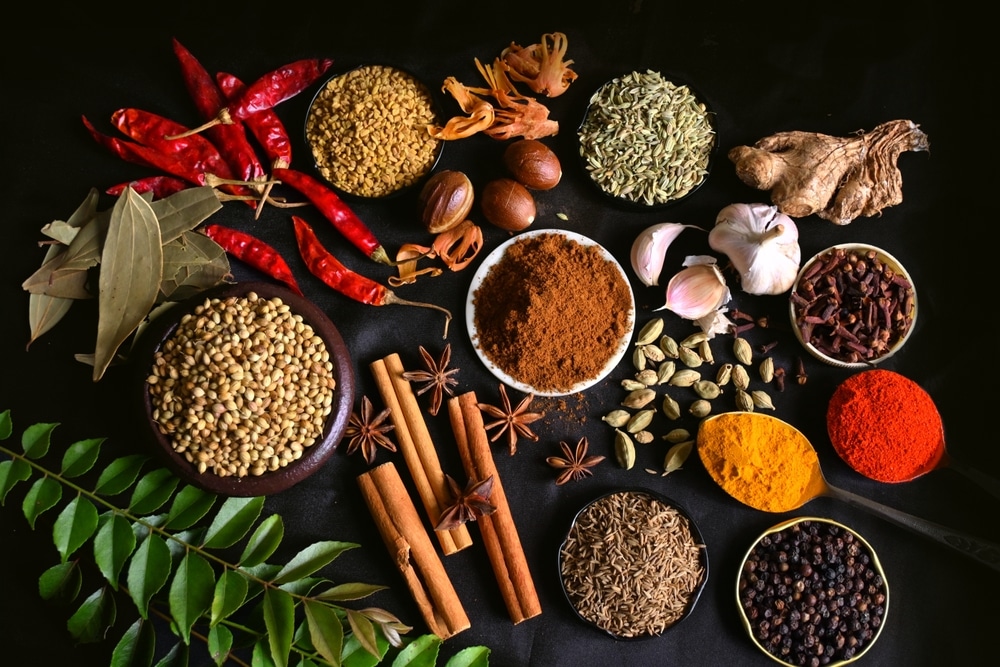
If you find yourself out of mace, there are several mace spice substitutes you can use:
Nutmeg
Since mace and nutmeg come from the same tree, nutmeg is the simplest mace substitute spice. Use a 1:1 ratio when substituting nutmeg for mace. Often referred to as sister spices, nutmeg and mace share many of the same beneficial properties. Both contain oleoresin capsicum, which contributes to their distinctive flavor and aroma. This compound is also found in pepper spray and defense spray, highlighting the potent nature of these spices.
Cinnamon
Cinnamon is perfect in sweet dishes, and it can be substituted for mace spice for a different but complementary flavor.
Allspice
This spice combines flavors of cinnamon, nutmeg, and cloves, making it a suitable substitute for the spice mace in both sweet and savory dishes.
Spice Blends
Additionally, mace pairs perfectly with other spices in spice blends, providing a subtle complexity to the mix. To create spice blends, combine nutmeg, cinnamon, and allspice to replicate the flavor of mace. This blend can be used as a mace spice replacement in various recipes.
Health Benefits of Mace Spice
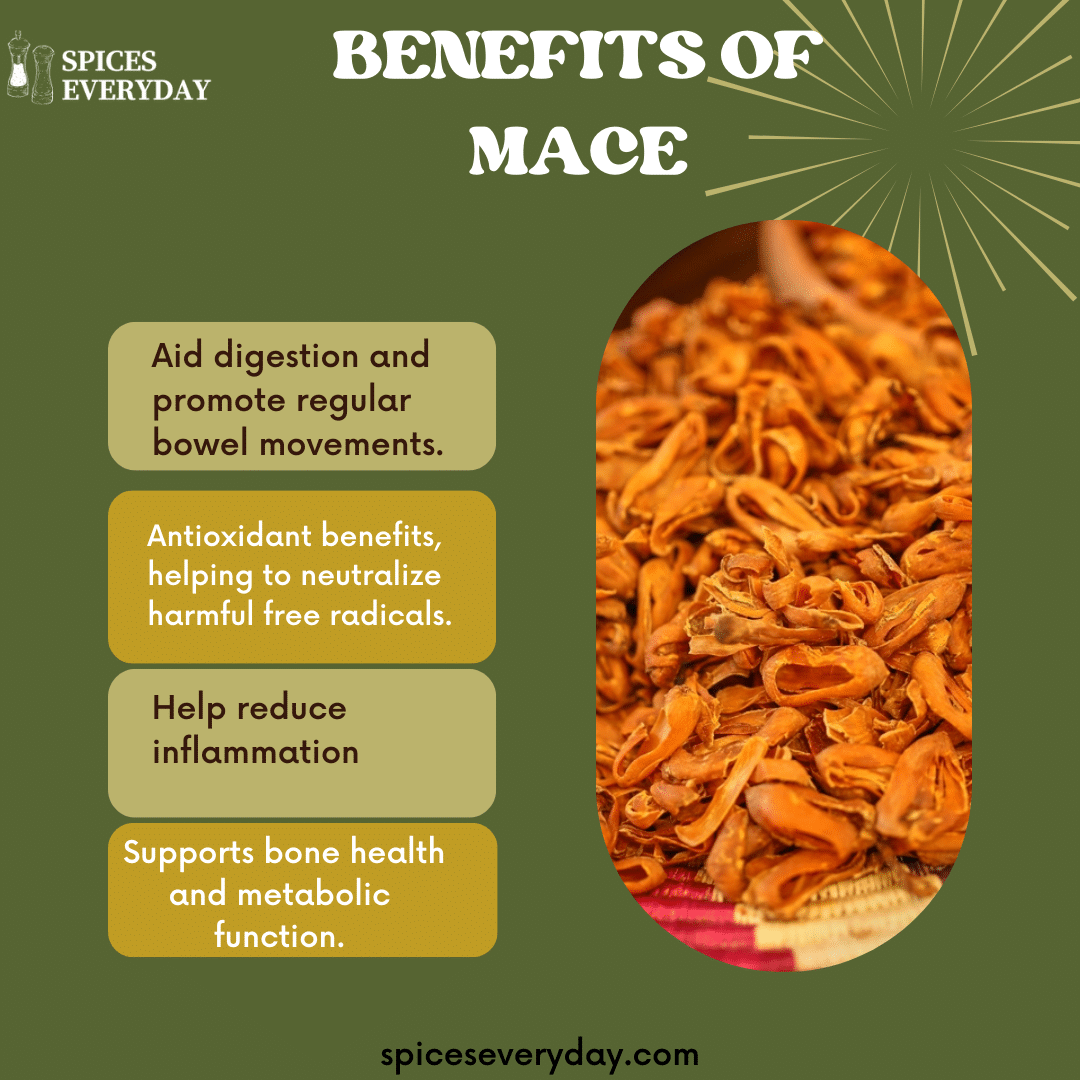
Mace isn’t just flavorful; it also offers several health benefits. It contains essential oils and active compounds with antioxidant, anti-inflammatory, and digestive properties. Incorporating mace into your diet can aid digestion, improve circulation, and boost overall health. However, due to its potency and strong essential oils, mace should be used in moderation. Excessive consumption can lead to adverse effects.
Digestive Health
The dietary fiber in mace can aid digestion and promote regular bowel movements.
Antioxidant Properties
Vitamins A, C, and E, along with other compounds, provide antioxidant benefits, helping to neutralize harmful free radicals.
Anti-Inflammatory
The essential oils in mace have anti-inflammatory properties, which can help reduce inflammation.
Mineral Content
The high calcium, iron, and magnesium content supports bone health, red blood cell production, and overall metabolic function.
Nutritional Content of Mace Spice
Mace contains essential oils, vitamins, and minerals. It’s rich in manganese, copper, and magnesium. Here’s a detailed breakdown of its nutritional content per 100 grams.
Macronutrients
- Calories: Approximately 475 kcal
- Carbohydrates: 50-60 grams
- Dietary Fiber: 20-30 grams
- Sugars: 0 grams (negligible)
- Protein: 6-8 grams
- Fat: 32-36 grams
Vitamins
- Mace spice contains a small amount of Vitamin A along with Vitamin C (Around 21 mg ) ,Vitamin E (Approximately 2.5 mg ).
- It also contains small amounts of B-complex vitamins such as thiamin (B1), riboflavin (B2), niacin (B3), and folate (B9).
Minerals
- The key minerals present in mace are Calcium (250-260 mg ), Iron around( 13 mg) and approximately 150mg of Magnesium.
- It also contains Phosphorus, Potassium, Sodium, Zinc, Manganese and Copper.
Essential Oils
Mace contains essential oils such as myristicin, elemicin, eugenol, and safrole, contributing to its distinctive aroma and potential medicinal properties.
Conclusion
Mace spice is a truly versatile and flavorful addition to any kitchen. Its distinct flavor profile makes it a valuable ingredient for various recipes, complementing savory and sweet foods. Mace is an excellent option for making a filling stew, baking holiday treats, or just wanting to twist your favorite recipes. Its unique flavor and scent can elevate your culinary creations from ordinary to outstanding. And if you ever find yourself out of mace, remember there are plenty of mace spice substitutes like nutmeg, cinnamon, and allspice to keep your dishes flavorful and exciting.
Therefore, use mace spice to enhance your cuisine and experience the delicious impact this aromatic spice may have in your kitchen.

